
- Subject:
- Mathematics
- Material Type:
- Full Course
- Provider:
- Pearson
- Date Added:
- 11/02/2020


Surface Area and Volume
Type of Unit: Conceptual
Prior Knowledge
Students should be able to:
Identify rectangles, parallelograms, trapezoids, and triangles and their bases and heights.
Identify cubes, rectangular prisms, and pyramids and their faces, edges, and vertices.
Understand that area of a 2-D figure is a measure of the figure's surface and that it is measured in square units.
Understand volume of a 3-D figure is a measure of the space the figure occupies and is measured in cubic units.
Lesson Flow
The unit begins with an exploratory lesson about the volumes of containers. Then in Lessons 2–5, students investigate areas of 2-D figures. To find the area of a parallelogram, students consider how it can be rearranged to form a rectangle. To find the area of a trapezoid, students think about how two copies of the trapezoid can be put together to form a parallelogram. To find the area of a triangle, students consider how two copies of the triangle can be put together to form a parallelogram. By sketching and analyzing several parallelograms, trapezoids, and triangles, students develop area formulas for these figures. Students then find areas of composite figures by decomposing them into familiar figures. In the last lesson on area, students estimate the area of an irregular figure by overlaying it with a grid. In Lesson 6, the focus shifts to 3-D figures. Students build rectangular prisms from unit cubes and develop a formula for finding the volume of any rectangular prism. In Lesson 7, students analyze and create nets for prisms. In Lesson 8, students compare a cube to a square pyramid with the same base and height as the cube. They consider the number of faces, edges, and vertices, as well as the surface area and volume. In Lesson 9, students use their knowledge of volume, area, and linear measurements to solve a packing problem.

Lesson OverviewStudents make two different rectangular prisms by folding two 812 in. by 11 in. sheets of paper in different ways. Then students use reasoning to compare the total areas of the faces of the two prisms (i.e., their surface areas). Students also predict how the amounts of space inside the prisms (i.e., their volumes) compare. They will check their predictions in Lesson 6.Key ConceptsStudents compare the total area of the faces (i.e., surface area) of one rectangular prism to the total area of the faces of another prism. Students make predictions about which prism has the greater amount of space inside (i.e., the greater volume). Students do not compute actual surface areas or volumes. This exploration helps pave the way for a more formal study of volume in Lesson 6 and a more formal study of surface area in Lesson 7.Goals and Learning ObjectivesExplore how the surface areas and volumes of two different prisms made from the same-sized sheet of paper compare.

Lesson OverviewStudents revise their packing plans based on teacher feedback and then take a quiz.Students will use their knowledge of volume, area, and linear measurements to solve problems. They will draw diagrams to help them solve a problem and track and review their choice of problem-solving strategies.Key ConceptsConcepts from previous lessons are integrated into this assessment task: finding the volume of rectangular prisms. Students apply their knowledge, review their work, and make revisions based on feedback from the teacher and their peers. This process creates a deeper understanding of the concepts.Goals and Learning ObjectivesApply your knowledge of the volume of rectangular prisms.Track and review your choice of strategy when problem-solving.

Four full-year digital course, built from the ground up and fully-aligned to the Common Core State Standards, for 7th grade Mathematics. Created using research-based approaches to teaching and learning, the Open Access Common Core Course for Mathematics is designed with student-centered learning in mind, including activities for students to develop valuable 21st century skills and academic mindset.

Zooming In On Figures
Unit Overview
Type of Unit: Concept; Project
Length of Unit: 18 days and 5 days for project
Prior Knowledge
Students should be able to:
Find the area of triangles and special quadrilaterals.
Use nets composed of triangles and rectangles in order to find the surface area of solids.
Find the volume of right rectangular prisms.
Solve proportions.
Lesson Flow
After an initial exploratory lesson that gets students thinking in general about geometry and its application in real-world contexts, the unit is divided into two concept development sections: the first focuses on two-dimensional (2-D) figures and measures, and the second looks at three-dimensional (3-D) figures and measures.
The first set of conceptual lessons looks at 2-D figures and area and length calculations. Students explore finding the area of polygons by deconstructing them into known figures. This exploration will lead to looking at regular polygons and deriving a general formula. The general formula for polygons leads to the formula for the area of a circle. Students will also investigate the ratio of circumference to diameter ( pi ). All of this will be applied toward looking at scale and the way that length and area are affected. All the lessons noted above will feature examples of real-world contexts.
The second set of conceptual development lessons focuses on 3-D figures and surface area and volume calculations. Students will revisit nets to arrive at a general formula for finding the surface area of any right prism. Students will extend their knowledge of area of polygons to surface area calculations as well as a general formula for the volume of any right prism. Students will explore the 3-D surface that results from a plane slicing through a rectangular prism or pyramid. Students will also explore 3-D figures composed of cubes, finding the surface area and volume by looking at 3-D views.
The unit ends with a unit examination and project presentations.
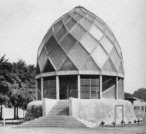
Students will complete the first part of their project, deciding on two right prisms for their models of buildings with polygon bases. They will draw two polygon bases on grid paper and find the areas of the bases.Key ConceptsProjects engage students in the application of mathematics. It is important for students to apply mathematical ways of thinking to solve rich problems. Students are more motivated to understand mathematical concepts if they are engaged in solving a problem of their own choosing.In this lesson, students are challenged to identify an interesting mathematical problem and choose a partner or a group to work collaboratively on solving that problem. Students gain valuable skills in problem solving, reasoning, and communicating mathematical ideas with others.GoalsSelect a project shape.Identify a project idea.Identify a partner or group to work collaboratively with on a math project.SWD: Consider how to group students skills-wise for the project. You may decide to group students heterogeneously to promote peer modeling for struggling students. Or you can group students by similar skill levels to allow for additional support and/or guided practice with the teacher. Or you may decide to create intentional partnerships between strong students and struggling students to promote leadership and peer instruction within the classroom.ELL: In forming groups, be aware of your ELLs and ensure that they have a learning environment where they can be productive. Sometimes, this means pairing them up with English speakers, so they can learn from others’ language skills. Other times, it means pairing them up with students who are at the same level of language skill, so they can take a more active role and work things out together. Other times, it means pairing them up with students whose proficiency level is lower, so they play the role of the supporter. They can also be paired based on their math proficiency, not just their language proficiency.
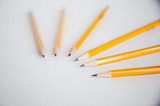
Students will explore the cross-sections that result when a plane cuts through a rectangular prism or pyramid. Students will also see examples of cross-section cuts in real-world situations.Key ConceptsStudents are very familiar with rectangular prisms, and to a lesser degree, they are familiar with rectangular pyramids. However, students haven’t been exposed to the myriad possibilities for solids that result from planar slices. The purpose of the lesson is for students to explore these possibilities.GoalsIdentify the plane figures that result from a plane cutting through a rectangular prism or pyramid.
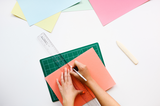
Gallery 2Allow students who have a clear understanding of the content thus far in the unit to work on Gallery problems of their choosing. You can then use this time to provide additional help to students who need to review the unit’s concepts or have fallen behind on work.Gallery OverviewOne World Trade CenterThis task gives students an opportunity to further explore figures that have been intersected by a plane. The task also allows students to revisit scale and think about the net of a sliced prism.Sketch ThreeThis task extends students’ knowledge of nets as they think about surfaces that are triangular and won’t line up parallel. Students may need to use a protractor to keep the angles of the sides consistent.Partial Cube NetThis task provides students with further experience in thinking about the revealed surface in a sliced prism, constructing a more complex net, and estimating area based on area formulas and measuring.Round PrismsThis task extends students’ knowledge of prism measurement to cylinders, which are really no different. Students will see that the only difference is that the base is circular, and they know how to find the circumference (perimeter) and area.Project Work TimeStudents may use a Gallery day to work on their projects and get help if needed.Cube Volume and NetsUsing the 2-D/3-D tool or the parallelogram cubes, students create a solid made of cubes. Using the 2-D views as a guide, they make a net for the figure and find its surface area. Students are challenged to make the net with one piece of paper.Same Surface Area, Different VolumeStudents create two solids with the same surface area but very different volumes. They that surface areas are the same by drawing the 2-D views.Tree House 2This task gives students further practice making a scale drawing and thinking about the net of a solid. Students should also realize that the plans for a building are the 2-D views of the building and are similar to a net.
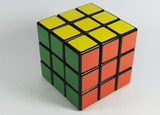
Students will critique their work from the Self Check in the previous lesson and redo the task after receiving feedback. Students will then take a quiz to review the goals of the unit.Key ConceptsStudents understand how to find the surface area (using nets) and volume of rectangular prisms. They have extended that knowledge to all right prisms and were able to generalize rules for both measurements. Students also found the surface area (and volume) of figures made up of cubes by looking at the 2-D views.GoalsCritique and revise student work.Apply skills learned in the unit.Understand 3-D measurements:Surface area and volume of right prismsArea and circumference of circlesSurface area and volume of figures composed of cubesSWD: Consider the prerequisite skills for this Putting it Together lesson. Students with disabilities may need direct instruction and/or guided practice with the skills needed to complete the tasks in this lesson. It may be helpful to pull individual students or a small group for direct instruction or guided practice with the skills they have learned thus far in this unit. While students have had multiple exposures to the domain-specific terms, students with disabilities will benefit from repetition and review of these terms. As students move through the lesson, check to ensure they understand the meaning of included domain-specific vocabulary. Use every opportunity to review and reinforce the meaning of domain-specific terms to promote comprehension and recall.
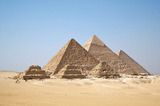
Students will extend their knowledge of surface area and nets of rectangular prisms to generalize a formula for the surface area of any prism.Key ConceptsStudents know how to find the surface area of a rectangular prism using a net and adding the areas for pairs of congruent faces. Students have not seen that the lateral surface forms one long rectangle whose length is the perimeter of the base and whose width is the height of the prism.Using this idea, the surface area of any right prism can be found using the formula:SA = 2B + (perimeter of the base)hGoalsFind a general formula for surface area of prisms.Find the surface area of different prisms.SWD: Generalization of skills can be particularly challenging for some students with disabilities. Students may need direct instruction on the connection between what they already understand and a general formula.Some students with disabilities may have difficulty recalling formulas when it comes time to apply them. Once students discover the formula SA = 2B + (perimeter of the base)h, consider posting the formula in the classroom and encouraging students to add the formula(s) to the resources they have available when completing classwork and homework.
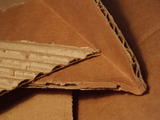
Lesson OverviewStudents will work on the final portion of their project which includes creating the nets for the sides, making a slice in one of their buildings, and putting their buildings together. Once their two model buildings are complete, they will find the surface area and volume for their models and the full-size buildings their models represent.Key ConceptsThe second part of the project is essentially a review of the second half of the unit, while still using scale drawings. Students will find the surface area of a prism as well as the surface area of a truncated prism. The second prism will require estimating and problem solving to figure out the net and find the surface area. Students will also be drawing the figure using scale to find actual surface area.GoalsRedraw a scale drawing at a different scale.Find measurements using a scale drawing.Find the surface area of a prism.SWD: Students with disabilities may have a more challenging time identifying areas of improvement to target in their projects. It may be helpful to model explicitly for students (using an example project or student sample) how to review a project using the rubric to assess and plan for revisions based on that assessment.Students with fine motor difficulties may require grid paper with a larger scale. Whenever motor tasks are required, consider adaptive tools or supplementary materials that may benefit students with disabilities.Students with disabilities may struggle to recall prerequisite skills as they move through the project. It may be necessary to check in with students to review and reinforce estimation skills.